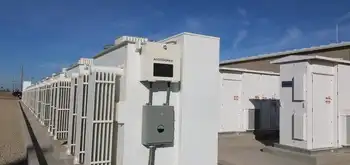Utilities look to the sun
Under recent deregulation, utilities such as Nstar and National Grid (formerly Massachusetts Electric) were forced to sell off their old coal- and gas-burning power plants to promote competition and to make utilities pure energy delivery companies.
But thanks to the new energy bill signed by Gov. Deval Patrick, utilities are now allowed to build and own solar facilities to generate electricity, as part of an effort to promote renewable fuels.
Both Nstar and National Grid said they definitely have plans to take advantage of the law, which allows each utility to develop solar facilities that can generate up to 50 megawatts of power.
Nstar said it’s already “evaluating sites for large-scale facilities,” perhaps with acres of solar panels generating electricity that would flow directly into the region’s power grid.
“We see this as a great opportunity,” said spokeswoman Caroline Allen.
National Grid, without providing any detailed information, said it hopes to file plans later this summer for future solar-facility projects.
A 50-megawatt facility is relatively small compared to existing power plants, which can generate anywhere from 200 megawatts to 1,800 megawatts.
But Robert Keough, a spokesman for PatrickÂ’s energy and environmental affairs office, said the goal is to promote increased use of environmentally friendly energy.
He said the administration is not worried about letting utilities back into the power-generation business.
Utilities were forced to sell their plants last decade under the belief that it was monopolistic to allow companies to both own power plants and sell electricity directly to customers.
“It’s small-scale and limited to a specific technology we think is appropriate,” Keough said of allowing utilities to own 50-megawatt solar facilities.
Related News

Here's what we know about the mistaken Pickering nuclear alert one week later
TORONTO - A number of questions still remain a week after an emergency alert was mistakenly sent out to people across Ontario warning of an unspecified incident at the Pickering Nuclear Generating Station.
The province’s solicitor general has stepped in and says an investigation into the incident should be completed fairly quickly.
However, the nuclear scare has still left residents on edge with tens of thousands of people ordering potassium iodide, or KI, pills that protect the body from radioactive elements in the days following the incident.
Here’s what we know and still don’t know about the mistaken Pickering nuclear plant alert:
Who sent…





